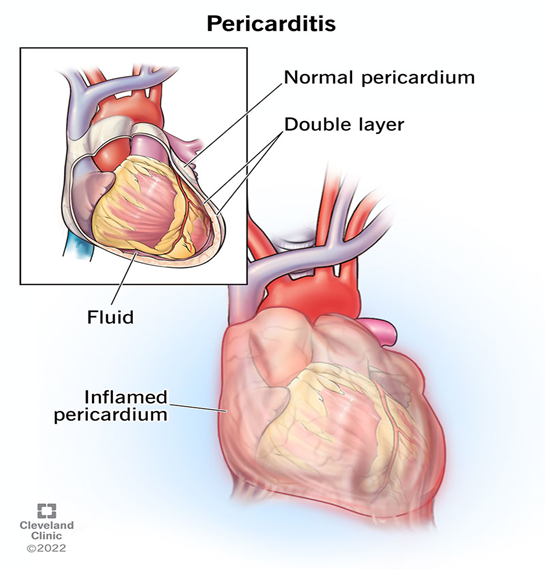A nurse is reviewing a client’s laboratory results and sees that their hemoglobin A1C is 9. Which of the following statements from the nurse is appropriate?
You have many dangerously low blood sugar levels.
Your average blood sugar is high.
Your blood sugar is too high after meals.
Your blood sugar is very unstable.
The Correct Answer is B
Choice A Reason:
This statement is incorrect because a hemoglobin A1C level of 9% indicates that the client’s blood sugar levels have been consistently high over the past two to three months. Hemoglobin A1C is a measure of average blood glucose levels, not low blood sugar levels. Therefore, it would be inappropriate to suggest that the client has dangerously low blood sugar levels based on this result.
Choice B Reason:
This statement is correct because a hemoglobin A1C level of 9% indicates that the client’s average blood sugar levels are high. Hemoglobin A1C reflects the average blood glucose levels over the past two to three months. A normal A1C level is below 5.7%, while an A1C level between 5.7% and 6.4% indicates prediabetes, and an A1C level of 6.5% or higher indicates diabetes. Therefore, an A1C level of 9% clearly shows that the client’s average blood sugar is high.
Choice C Reason:
This statement is partially correct but not the most appropriate. While it is true that a high hemoglobin A1C level can indicate that blood sugar levels are high after meals, it is not specific enough. Hemoglobin A1C measures the average blood glucose levels over a period of time, not just after meals. Therefore, the statement “Your average blood sugar is high” is more accurate and appropriate.
Choice D Reason:
This statement is incorrect because it is too vague and does not provide specific information about the client’s blood sugar levels. While a high hemoglobin A1C level can indicate variability in blood sugar levels, it primarily reflects the average blood glucose levels over the past two to three months. Therefore, it would be more appropriate to state that the client’s average blood sugar is high.
Nursing Test Bank
Naxlex Comprehensive Predictor Exams
Related Questions
Correct Answer is C
Explanation
Choice A reason:
Serum phosphate levels are not the primary concern in the management of diabetes insipidus (DI). While phosphate levels are important for overall health, they do not directly relate to the condition or its treatment with desmopressin. DI primarily affects water balance and sodium levels in the body.
Choice B reason:
Serum calcium levels, although important, are not the most critical lab value to monitor in a client with DI receiving desmopressin. Calcium levels are crucial for bone health and various metabolic functions, but they do not directly reflect the effectiveness or complications of desmopressin therapy.
Choice C reason:
Serum sodium levels are the most important lab value to monitor in a client with DI receiving desmopressin. DI causes an imbalance in water regulation, leading to excessive urination and potential dehydration. Desmopressin helps to reduce urine output and maintain water balance, but it can also lead to water retention and hyponatremia (low sodium levels). Monitoring serum sodium is crucial to prevent complications such as seizures, confusion, and other neurological symptoms associated with hyponatremia.
Choice D reason:
Blood urea nitrogen (BUN) levels are useful in assessing kidney function and hydration status, but they are not the primary concern in the management of DI with desmopressin. While BUN levels can provide valuable information about renal function, they do not directly indicate the effectiveness or potential complications of desmopressin therapy.
Correct Answer is ["C","D"]
Explanation
Choice A Reason
Acetaminophen is often used to manage pain and fever, but it is not the primary treatment for pericarditis. While it can help alleviate discomfort, it does not address the inflammation associated with pericarditis12.
Choice B Reason:
Amiodarone is an antiarrhythmic medication used to treat and prevent various types of serious irregular heartbeats, such as ventricular tachycardia or ventricular fibrillation. It is not typically used for treating pericarditis, as it does not address the inflammation or pain associated with the condition.
Choice C Reason:
Colchicine is recommended as part of the first-line treatment for pericarditis. It helps reduce inflammation and the risk of recurrent pericarditis when used in conjunction with NSAIDs5. Colchicine is effective in managing symptoms and preventing recurrences.
Choice D Reason:
Indomethacin is a nonsteroidal anti-inflammatory drug (NSAID) that is effective in reducing inflammation and pain associated with pericarditis. NSAIDs are commonly prescribed for pericarditis to help manage symptoms and reduce inflammation. Indomethacin, along with other NSAIDs like ibuprofen, is often part of the first-line treatment for this condition.
Choice E Reason:
Nitroglycerine is primarily used to treat angina (chest pain) and heart failure by dilating blood vessels and reducing the heart’s workload. It is not typically used for treating pericarditis, as it does not address the inflammation or pain associated with the condition.

Whether you are a student looking to ace your exams or a practicing nurse seeking to enhance your expertise , our nursing education contents will empower you with the confidence and competence to make a difference in the lives of patients and become a respected leader in the healthcare field.
Visit Naxlex, invest in your future and unlock endless possibilities with our unparalleled nursing education contents today
Report Wrong Answer on the Current Question
Do you disagree with the answer? If yes, what is your expected answer? Explain.
Kindly be descriptive with the issue you are facing.
